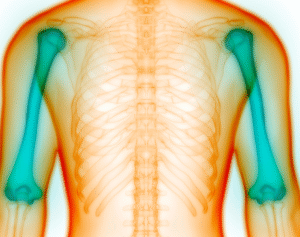Unmasking the Overlaps: Conditions Commonly Mistaken for Fibromyalgia
Introduction
Fibromyalgia is a chronic disorder characterized by widespread musculoskeletal pain, fatigue, and tenderness in localized areas. Due to the absence of definitive diagnostic tests and the overlap of its symptoms with other conditions, fibromyalgia is often misdiagnosed. Understanding the conditions that mimic fibromyalgia is crucial for accurate diagnosis and appropriate treatment.
Autoimmune and Rheumatic Disorders
Rheumatoid Arthritis (RA)
RA is an autoimmune disease causing inflammation in the joints, leading to pain and swelling. While both RA and fibromyalgia involve joint discomfort and fatigue, RA typically presents with joint swelling and deformities, which are not characteristic of fibromyalgia.
Systemic Lupus Erythematosus (SLE)
SLE is an autoimmune disease affecting multiple organ systems. Symptoms like joint pain, fatigue, and cognitive difficulties overlap with fibromyalgia. However, SLE often includes skin rashes and organ involvement, distinguishing it from fibromyalgia.
Polymyalgia Rheumatica (PMR)
PMR causes muscle pain and stiffness, particularly in the shoulders and hips. Unlike fibromyalgia, PMR typically affects individuals over 50 and responds well to corticosteroids.
Ankylosing Spondylitis (AS)
AS is a form of arthritis primarily affecting the spine, leading to chronic back pain and stiffness. While both AS and fibromyalgia cause back pain and fatigue, AS involves inflammation visible on imaging studies, aiding in differentiation.
Neurological Conditions
Multiple Sclerosis (MS)
MS is a central nervous system disorder causing symptoms like fatigue, pain, and cognitive issues, similar to fibromyalgia. However, MS often presents with neurological deficits such as vision problems and muscle weakness, which are not typical in fibromyalgia.
Peripheral Neuropathy
This condition involves nerve damage leading to pain, tingling, and numbness, primarily in the extremities. While fibromyalgia also causes widespread pain, it does not typically involve the nerve damage seen in peripheral neuropathy.
Endocrine and Metabolic Disorders
Hypothyroidism
An underactive thyroid can cause fatigue, weight gain, and muscle aches, mirroring fibromyalgia symptoms. Thyroid function tests can help distinguish between the two conditions.
Vitamin D Deficiency
Low vitamin D levels can lead to bone pain and muscle weakness. Unlike fibromyalgia, these symptoms often improve with vitamin D supplementation.
Osteomalacia
This softening of the bones due to vitamin D deficiency presents with bone pain and muscle weakness. Unlike fibromyalgia, osteomalacia can be identified through bone density tests and treated with vitamin D and calcium supplementation.
Infectious Diseases
Lyme Disease
Caused by tick-borne bacteria, Lyme disease can lead to joint pain, fatigue, and neurological issues. A history of tick exposure and specific blood tests can aid in diagnosis.
Hepatitis C
This liver infection can cause fatigue and joint pain. Blood tests for liver function and viral markers help differentiate it from fibromyalgia.
Gastrointestinal Disorders
Celiac Disease
An autoimmune reaction to gluten, celiac disease can cause fatigue, joint pain, and digestive issues. Unlike fibromyalgia, symptoms often improve with a gluten-free diet.
Irritable Bowel Syndrome (IBS)
IBS involves abdominal pain and altered bowel habits. While common in fibromyalgia patients, IBS is a separate gastrointestinal disorder requiring distinct management.
Psychiatric and Sleep Disorders
Depression and Anxiety
These mental health conditions can manifest with fatigue and pain. However, fibromyalgia includes physical tenderness and sleep disturbances not solely explained by psychiatric disorders.
Sleep Apnea
Characterized by interrupted breathing during sleep, sleep apnea leads to fatigue and cognitive issues. Sleep studies can identify this condition, which is treatable with continuous positive airway pressure (CPAP) therapy.
Other Musculoskeletal Conditions
Myofascial Pain Syndrome
This condition involves trigger points causing localized muscle pain. Unlike the widespread pain in fibromyalgia, myofascial pain is more localized and responds to physical therapy.
Chronic Fatigue Syndrome (CFS)
Also known as myalgic encephalomyelitis, CFS shares symptoms like fatigue and cognitive difficulties with fibromyalgia. However, CFS often includes post-exertional malaise, where symptoms worsen after physical activity.
Conclusion
Fibromyalgia‘s symptom overlap with various conditions makes accurate diagnosis challenging. A thorough medical evaluation, including history, physical examination, and appropriate tests, is essential to distinguish fibromyalgia from other disorders. Early and accurate diagnosis ensures effective treatment and improves patient outcomes.
Frequently Asked Questions
1. Why is fibromyalgia often misdiagnosed?
Fibromyalgia shares symptoms with many other conditions, such as chronic pain, fatigue, and cognitive difficulties. The lack of specific diagnostic tests further complicates accurate identification.
2. Can fibromyalgia coexist with other medical conditions?
Yes, fibromyalgia can coexist with other disorders like rheumatoid arthritis, lupus, and irritable bowel syndrome, making diagnosis and treatment more complex.
3. What tests are used to diagnose fibromyalgia?
Diagnosis is primarily clinical, based on patient history and symptom patterns. Tests are conducted to rule out other conditions rather than confirm fibromyalgia.
4. How can one differentiate between fibromyalgia and rheumatoid arthritis?
While both involve joint pain and fatigue, rheumatoid arthritis typically presents with joint swelling and deformities, which are not seen in fibromyalgia.
5. Is there a cure for fibromyalgia?
Currently, there is no cure for fibromyalgia. Treatment focuses on symptom management through medications, lifestyle changes, and therapy.
6. Can lifestyle changes help manage fibromyalgia symptoms?
Yes, regular exercise, stress management, adequate sleep, and a balanced diet can help alleviate symptoms and improve quality of life.



